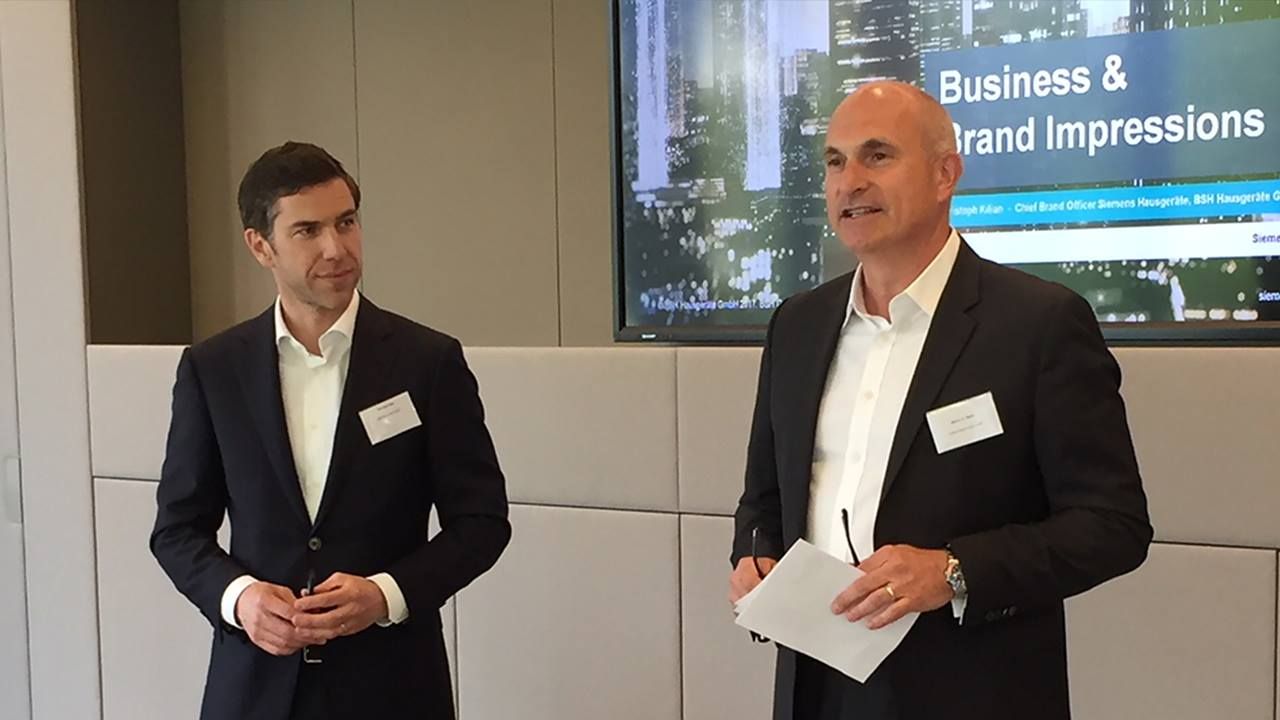Digital Experience Forum
Why is digitalization particularly difficult for German companies? What role do new technologies play in the customer journey? And what can companies learn from rebels? These were just a few of the topics at the Digital Experience Forum that UDG United Digital Group and BSH Hausgeräte held in Munich.
Because they have primarily achieved market leadership through technical innovation and high product quality, German companies often find digital transformation, with its focus on customers, particularly difficult, says Marcus H. Starke, CEO of UDG United Digital Group. Often, they develop products to maturity before even looking into whether a market exists, he adds. “Cultural change is necessary to shift a company’s focus to customers – away from technology, toward customer centricity.”
BSH is currently moving toward a clear focus on customer needs. “It’s our job to make sure that our consumers feel enabled and ready to seize the full potential of smart technologies and master the challenges of everyday life with ease. For us, that means we have to understand what modern-day, connected life looks like and what exactly the needs of users around the world are,” says Christoph Killian, Chief Brand Officer for the Siemens Home Appliances brand at BSH Hausgeräte GmbH, a Trademark Licensee of Siemens AG. Personalization and new user interfaces, as well as automation and convenience, are the trends that will shape the world of home appliances in the years ahead. As a result, the manufacturer cooperates with brands such as Amazon, Tesla and Rewe on its Home Connect products.
This collaboration has an impact on the brand’s image. Rather than explaining product features, Siemens Home Appliances presents its customers with a world of experiences and emotions. An example of these efforts can be seen on the new website that is already live in the Indian market and will be rolled out worldwide between now and June. Instead of limiting itself to kitchen appliances, the website showcases living environments designed by Berlin-based architect Arno Brandlhuber, who works with concrete, or Hong Kong’s Kevin Chu, who focuses on sustainable living. Storytelling has replaced product catalogs.
That’s because today’s customers are sophisticated and demand more. They want to start or continue the customer journey at any time, on the device of their choice. The result is a wide range of touchpoints, according to Kian Saemian, Vice President Future Technologies at Mackevision. Along with the main channels store, home and mobile, new technologies such as augmented and virtual reality also play a role here. Automakers such as Ferrari already let their customers explore real, configured sports cars using VR and share the video with friends on social media. But technology should not be an end in itself. “The focus should always be on the product, and the combination of technology and touchpoint must result in true added value for the customer,” Saemian says.
Along with virtual reality, artificial intelligence (AI) is already being used in a number of fields. The synergy between smart appliances, mobile internet connectivity and the resulting data and cloud services has helped artificial intelligence advance rapidly, says Christian Becker, Chief Architect at Microsoft Services. For example, image recognition algorithms have been performing better than the average human in various scenarios since 2015. Today, these algorithms are already helping the visually impaired live more independent lives, assisting insurance companies in analyzing photos of damages and supporting businesses in preventing accidents on their premises. And AI is also set to revolutionize our lives and society.
That is why it is important for companies and society to act responsibly in navigating the new world of possibilities, Becker says. “As a leading provider of AI and cloud solutions, Microsoft faces up to this responsibility. We are looking for societal dialogue on the use of artificial intelligence, balanced with opportunities and risks.”
It is rarely technology that hinders the success of the digital transformation. Often, it is people who slow down or prevent change. But how can you encourage employees to be willing to promote and instigate change? Johannes Stock, Principal Consultant/Design Strategist at Futrice, has looked to famous rebels for inspiration in answering this question.
The politician Mahatma Gandhi asked people to “see the world how it really is.” Only those who are aware of reality can power change. Part of that is taking a critical look at yourself. Which people won’t I ask for their opinion? What topics do I avoid? What motivates me?
Entrepreneur Elon Musk says: “Question and challenge the status quo.” It is necessary to understand a company’s true power structure to bring about internal change. Creating disruption and breaking unwritten rules helps shake up a company’s complacency.
“Take action,” says performance artist Marina Abramović. The progress resulting from change must be made visible by showcasing even small steps. That’s because action creates trust. “What we do changes what we think, feel and believe,” Stock says. “And what we thing, feel and believe changes what we do.”
And that is just the first step.
